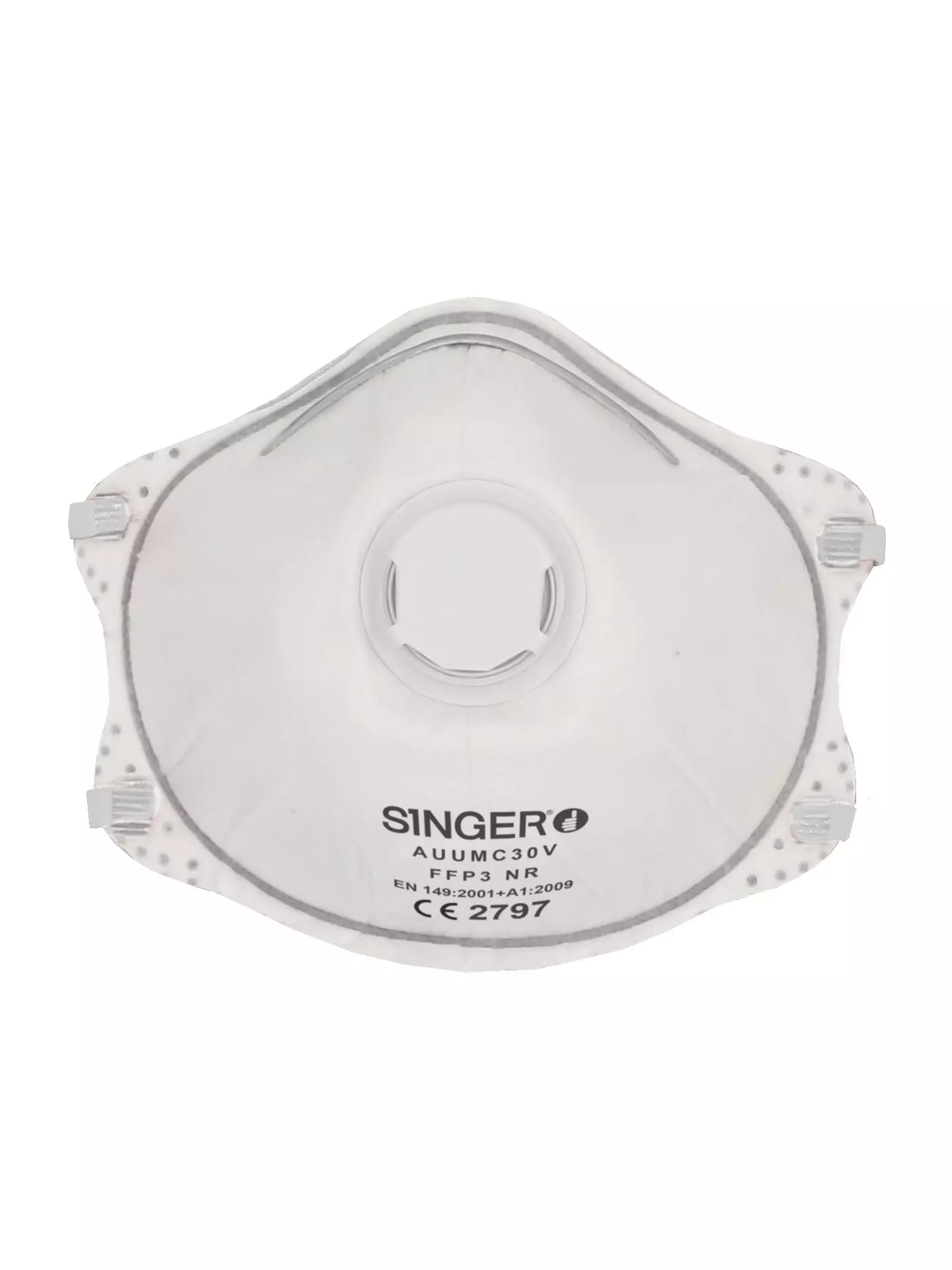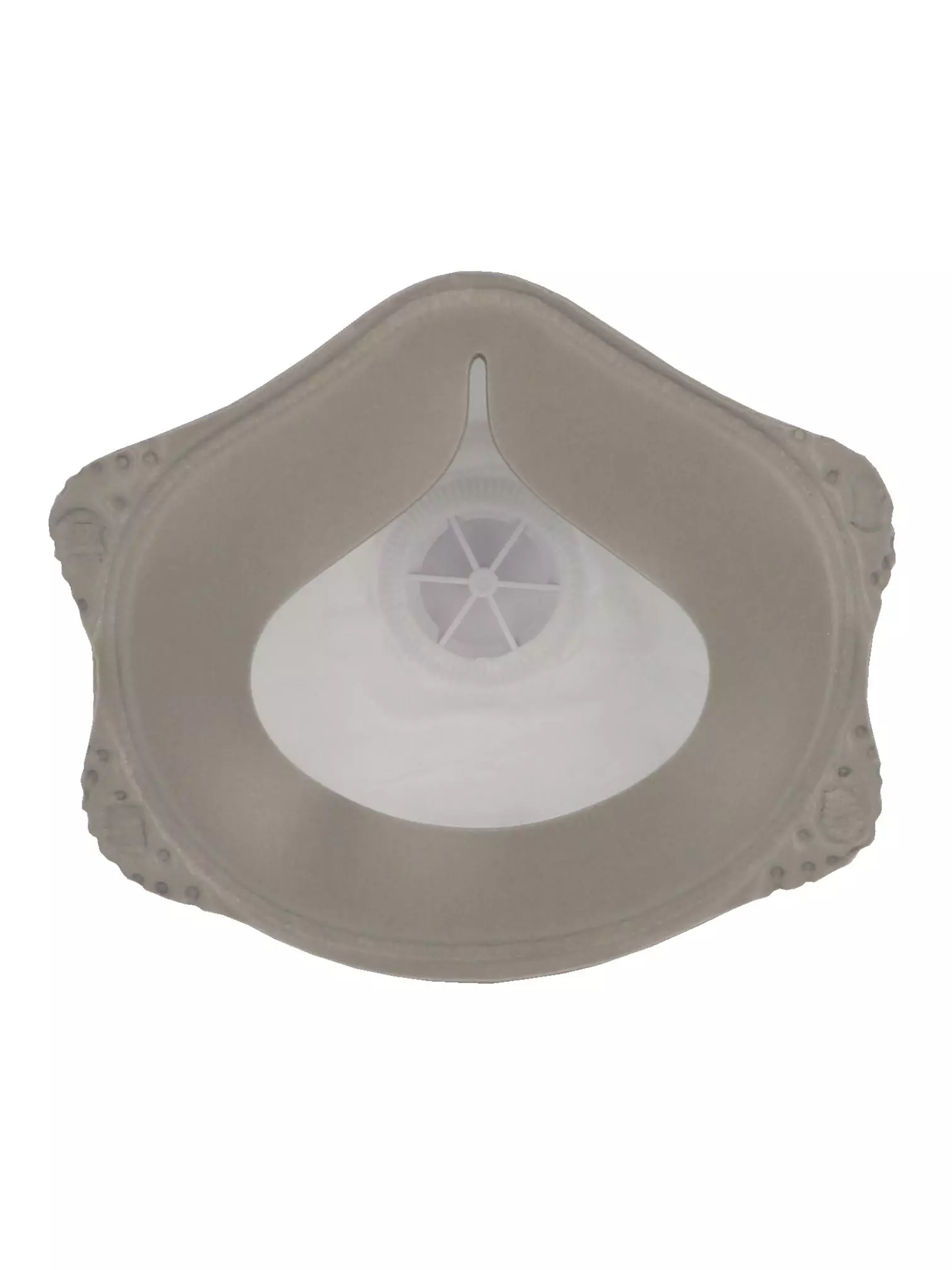

Features You'll Love

Nose Pad Type · Metal Clip
The type of adjustable component at the nose bridge that ensures proper fit and seal, affecting comfort and protection effectiveness.

Respirator Style · Half Face
Mask Shape · Cup
Determines the coverage area and design of the respirator, such as full face or half face, affecting protection level and compatibility with other safety equipment.
Determines the physical form of the mask, affecting comfort, breathing space, storage convenience, and how well it seals against your face.

Filter Type · FFP3 (99 %)
Indicates the level and type of filtration provided, determining what contaminants the respirator protects against and the percentage of particles filtered.

Strap Type · Elastic
The method used to secure the respirator to your face, affecting comfort, fit, and ease of putting on and removing the mask.
Singer Safety
FFP3 Half-Mask, 10 pieces
FFP3 Half-Mask, 10 pieces
4.3 / 5
19,03 €
Price per 10 pcs
1,90 € / piece
Choose size
Free delivery
Features You'll Love

Nose Pad Type · Metal Clip
The type of adjustable component at the nose bridge that ensures proper fit and seal, affecting comfort and protection effectiveness.

Respirator Style · Half Face
Mask Shape · Cup
Determines the coverage area and design of the respirator, such as full face or half face, affecting protection level and compatibility with other safety equipment.
Determines the physical form of the mask, affecting comfort, breathing space, storage convenience, and how well it seals against your face.

Filter Type · FFP3 (99 %)
Indicates the level and type of filtration provided, determining what contaminants the respirator protects against and the percentage of particles filtered.

Strap Type · Elastic
The method used to secure the respirator to your face, affecting comfort, fit, and ease of putting on and removing the mask.
Product description
This pre-shaped half-mask respirator provides high-level FFP3 protection against hazardous particles in demanding work environments. Constructed from polypropylene non-woven material with a comfortable foam face seal, it offers superior filtration efficiency while maintaining user comfort. The exhalation valve reduces breathing resistance and heat buildup, making it suitable for extended wear in industrial settings, chemical handling, agriculture, and maintenance operations.
Product Features:
- Pre-shaped design resistant to deformation for consistent protection
- Foam face seal ensures optimal protection and comfortable fit
- Exhalation valve reduces breathing resistance and fatigue
- Double elastic band with adjustable metal nosepiece for secure positioning
- Latex-free and staple-free construction minimizes skin irritation
- Ergonomic, lightweight and compact design
Technical Details:
- FFP3 NR classification (single-use, highest filtration level)
- Polypropylene non-woven construction
- Protection against toxic solid and liquid aerosols
- Filtration capacity up to 50x MAC or 20x APF
- Category III Personal Protective Equipment
Standards:
- EN 149:2001+A1:2009 (FFP3 NR)
- European Regulation (EU) 2016/425 for PPE
- Certified by BSI Group the Netherlands B.V. (Notified Body n°2797)
- ISO 9001 compliant manufacturing
EAN: 3660514252998